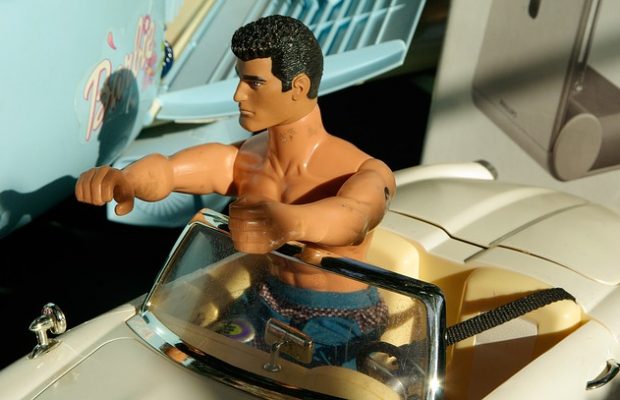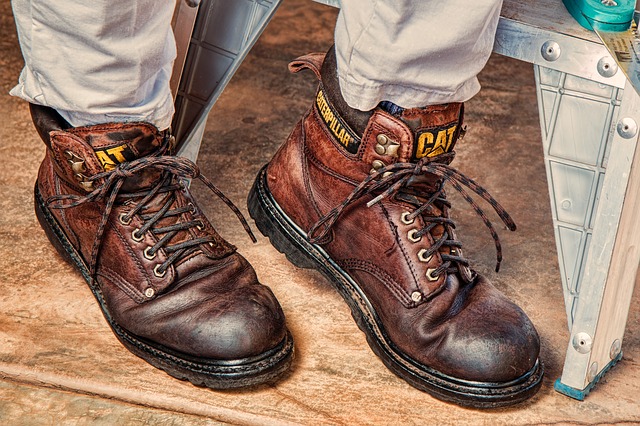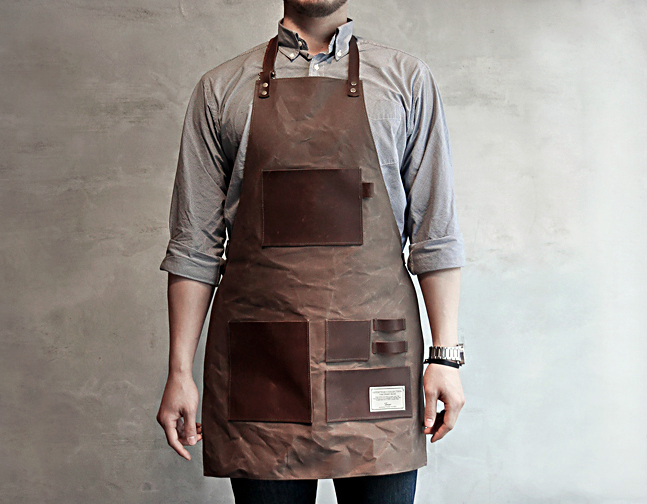
Most preppers recognize the rule of threes, as they pertain to preparedness, to include being able to survive three hours without shelter, three days without water, and three weeks without food. Included in being able to survive three hours without shelter but often neglected, is the clothing. Warm clothing will help keep you from burning calories up at a time when calories may have to be carefully controlled.
When you aren’t getting enough calories, your body has a harder time generating heat and you really need warmer layers of clothing and blankets. Light clothing will help keep you from overheating in heavy labor in summer. Choosing the right clothing may be critical to your survival.
We choose our clothing based on the climate, but we should also remember to prepare for some changes to climate if there is any possibility at all of moving to an area that differs in temperature, humidity, or rainfall. While I have lived most of my life in the high deserts of the West, I did spend five years in Missouri. Northern Nevada and Central Missouri are at about the same latitude and the temperatures are the same. The difference is humidity, and wow, what a difference! I never want to experience the bitter cold of a Missouri blizzard again. Nor do I want even a few hours’ repeat of laboring in the garden at 90 degrees Fahrenheit and 90% humidity. So it may be wise to prepare for extremes. It’s something that many of us don’t consider, probably because we have grown up in a time when the solution to being too warm or too cool hasn’t been to add or remove layers, but to adjust the thermostat. I’m grateful for each morning I wake up to find that the thermostat still works. But I prepare my family for the day that it won’t.

This book could have been called The Replacement for The US Healthcare System. Learn here why
Making the right choices in clothing could be crucial to our survival, so let’s start from the top and see if you are a well-dressed prepper.
Hats
A wide-brimmed straw hat is essential for working outside in the heat of the day. Heat exhaustion and heat stroke are real threats, and they are even more real for the elderly. But heat stroke can also affect those who think they aren’t quite senior citizens yet and still able to put in a good day’s work, or at least a few hours in the garden. Baseball caps and visors are good for shading faces. Beanies are good for all cold weather, but also for sleeping when nights are cool, for those who chill easily. Ski masks/balaclavas are crucial for bitter temperatures and biting winds and blizzards to protect the facial skin from frostbite.
Bandanas
Bandanas are the multi-tool of clothing. But make sure what you get is 100% cotton. Not only can your bandana—which when TEOTWAWKI hits you should be wearing at all times—blot sweat or function as sunblock for your neck, but it can also work as a tourniquet, sling, bandage, signal, preliminary water filter, the list goes on. An entire article could be written just on bandana uses.
Scarves
Choose your scarves carefully. You may want one that can do more than wrap around your neck once or twice. And if you live in colder areas, you will definitely want to upgrade beyond a wool scarf to alpaca or angora fiber instead for something that is much warmer, much softer, and at the same time much lighter.

This book teaches you What To Do When Your Doctor Is Not Around. Follow this link for details
Underwear
ShirtsThese items I just do not want to have to DIY, ever, so these get stockpiled. Fortunately, they are very light and take very little space. Thermals get stockpiled as well. Under Armour is a popular choice. Wool is highly desirable if there is any chance of getting wet. Yeah, we all fear the itch, but there are really high quality merino thermals available. They’re a little pricey, but they will be worth every penny when the need arises.
Of course, everyone has plenty of t-shirts, for everything we have to do. And most have Pendleton-type heavier wool shirts for keeping warm in winter, but make sure you have some long-sleeve lightweight shirts in natural fibers. I really love the very light-weight 100% wool shirts I have. Unlike 100% cotton which I will eventually be able to wring the sweat out of, the light-weight wool shirts are great at wicking perspiration and shielding from the sun.
Pants
While most everyone has plenty of jeans, most of what is sold today is very lightweight and poorly made. What we need are heavy-duty denim jeans, like what farmers wear. Buddy’s Jeans are incredibly durable, and made in the USA. Duluth Trading Company sells “firehose” pants, which are also very durable.
Socks
People sometimes don’t give much thought to the socks. They’re cheap and easily replaced. Unfortunately, they ARE cheap! As with almost everything in the USA, quality has been decreasing over the past few years. Cotton socks in brands that I have bought for years now seem to start falling apart after just a few washings. Because commercially produced high quality wool socks for a family of seven are a bit out of our price range, I am now knitting socks. Regardless of whether you buy commercial or make your own, you must have natural fibers, though you may have some nylon content for durability. Avoid acrylic like the plague. Wear wool socks year round to help control athlete’s foot fungus. Choose angora blends in the winter to have the warmest feet.
Shoes
Everybody in the family should have work boots as well as several pairs of athletic shoes for every day wear. Most shoes are manufactured overseas, and most are rather poorly made and will not last long. When our society collapses footwear will become extremely hard to find. Be sure to have plenty of Shoe-Goo for repairs and an abundant supply of spare shoelaces. Flip-flops are not shoes and should be reserved for showers. Shoes should really be worn at all times, even indoors, to protect from injury.

Sweaters
Each family member should have a few sweaters for layering. However, not all sweaters are created equal. For maximum comfort and warmth, you really only want sweaters made from natural animal fibers—wool and alpaca primarily. Cotton and synthetics just don’t keep a body very warm, and if they get wet, they stay wet, whereas if wool and alpaca get wet you will still be able to keep warm.
Coats and jackets
Make sure that your outerwear will keep you warm enough to be outside for extended periods in the coldest of temperatures and in a range of conditions. And make sure you test it in those conditions! I have one jacket my dad bought me that is warm enough for me most of the time, but if the wind is blowing it’s almost worthless. Better to find that out now, before it can’t be replaced.
Coveralls
The family mechanics have lightweight coveralls for dirty jobs. However, everyone in the family has Carhartt insulated coveralls. My husband and son reported that these coveralls kept them very comfortable—almost too warm—as they worked to help a family whose car had gone off the road one Thanksgiving in a miserable Missouri snowstorm.
Gloves and mittens
Of course, a wide variety of gloves is needed. Leather gloves for heavy labor, garden gloves for digging in the soil, rubber gloves for doing dishes and protecting hands from harsh chemicals, latex gloves for caring for the ill and handling bio-hazards, and very warm gloves or mittens for cold weather. Children will need the latter in a variety of sizes to accommodate growth. Also consider having some very warm finger-less gloves for those occasions when having to work with tools outside in cold temperatures.
Aprons
Aprons were indispensable in times past when people had just two or three changes of clothes and when it was all washed by hand. They served two important functions—protecting clothing and reducing the amount of laundry. While we currently have aprons only for cooking and working in the shop, this summer I am also making aprons for eating dinner and working in the garden.
Many preppers frequent thrift stores and garage sales looking for discounted quality items that will help them. Most also seek good quality clothing. However, they often limit themselves to looking for clothing in sizes currently needed. This is a great time to buy for the eventual needs of growing children. A pair or two of shoes in every size for a few years into the future is not unreasonable, and in fact will save you a great deal of money even if society never collapses. Also consider acquiring knit sweaters in sizes you don’t wear and scarves that can be re-knit or felted into other clothing.
Clothing was so expensive in colonial times that suits and dresses were written into our ancestors’ wills. “My black suit to John, my brown suit to James….” “The blue dress to Sarah, my red dress to Elizabeth….” As I prep for economic and societal collapse, I consider the daily life of colonial and pioneer women, living as they did without electricity or indoor plumbing. For them, there was a reason why as soon as the dinner dishes were done, the work day wasn’t over yet, and women sat down to mend clothing and knit socks. Women spent all day cooking, cleaning, and doing laundry, all evening working on clothing. Clothing isn’t glamorous. It’s not exciting. But it is essential to our survival. Choosing your clothing well now will make you and your family much more comfortable when times get difficult.
Other self-sufficiency and preparedness solutions recommended for you:
Healthy Soil + Healthy Plants = Healthy You
The vital self-sufficiency lessons our great grand-fathers left us
Knowledge to survive any medical crisis situation
Liberal’s hidden agenda: more than just your guns
Build yourself the only unlimited water source you’ll ever need
4 Important Forgotten Skills used by our Ancestors that can help you in any crisis





















